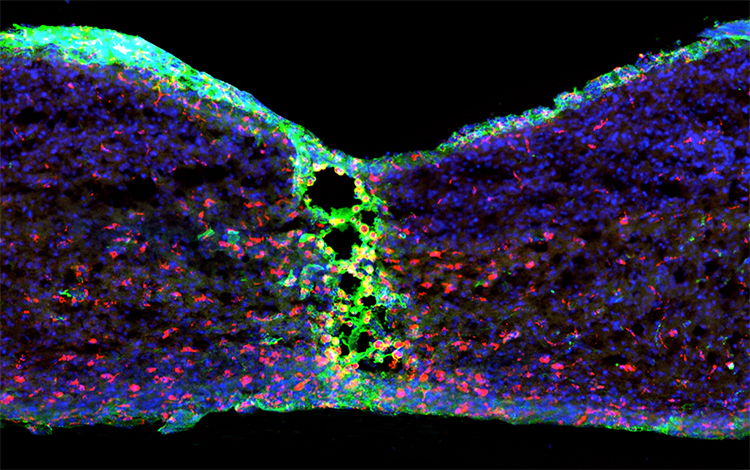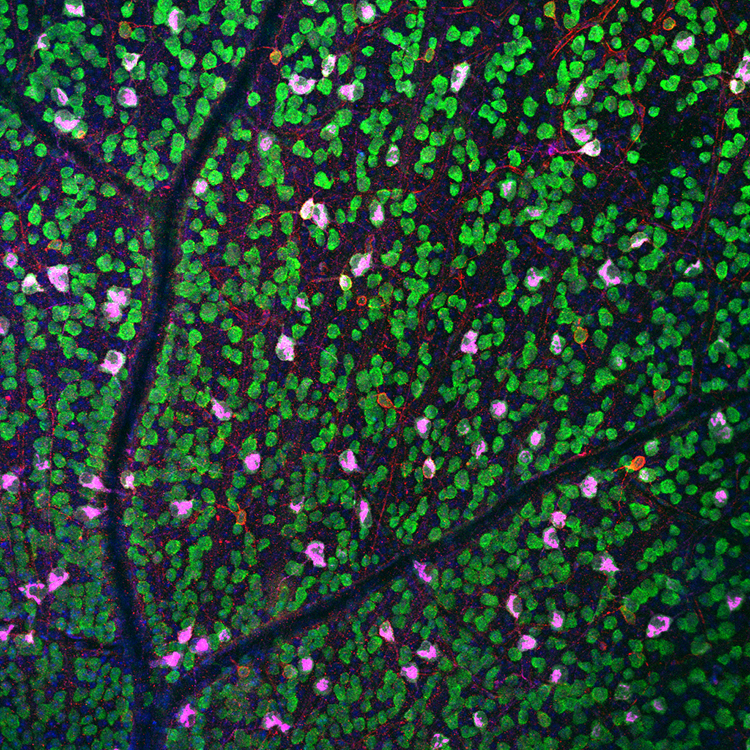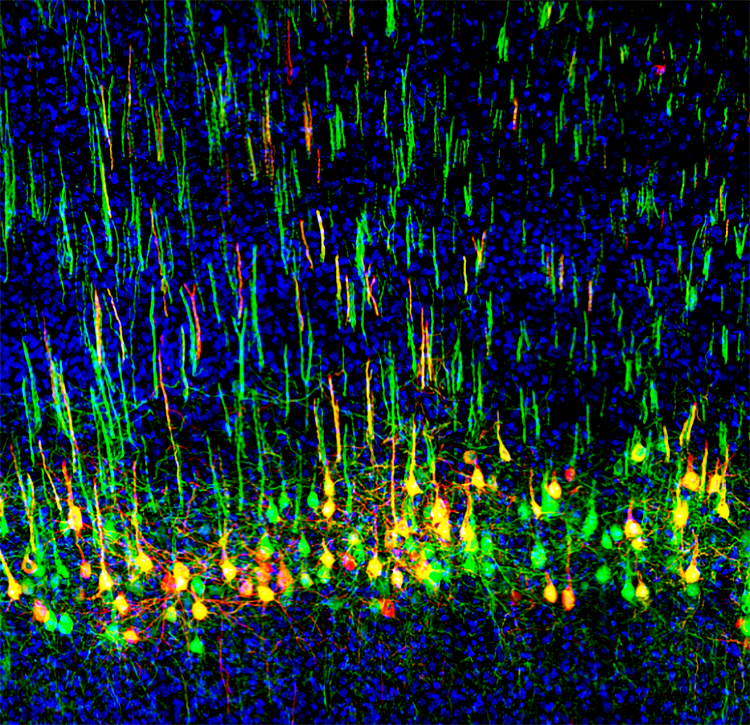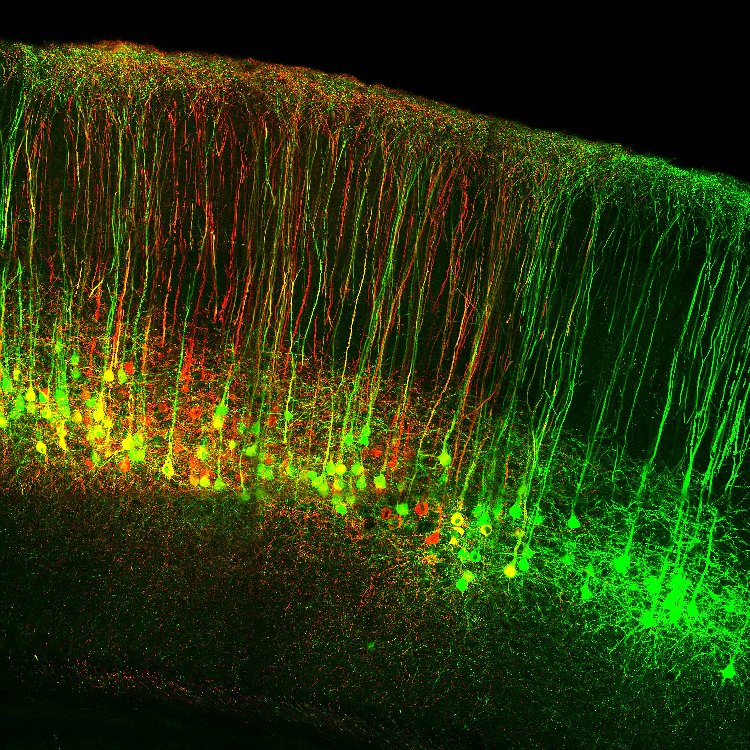LAB PROTOCOLS >
Elucidating mechanisms that promote axon regeneration

Functional deficits after spinal cord injury, or other CNS injuries, are primarily due to the disruption of axonal connections. A critical step towards restoring functional circuits is to promote regeneration of long fiber axon tracts severed after injury. In the past, we have identified several key controllers of this process, such as PTEN/mTOR and SOCS3/STAT, which regulate a neuron’s intrinsic regenerative ability. Manipulation of these pathways results in significant axon regrowth with partial function recovery. However, not all injured axons are able to regenerate with current manipulations. Furthermore, regeneration remains slow and axons are often far from reaching their pre-injury length. By using different models (spinal cord injury and optic nerve injury) and harnessing new tools, our studies aim to uncover cell-type specific mechanism and ways to overcome these limitations.
(Image Credit: Yi Li, PhD)
Protecting injured neurons from degeneration

CNS injury often triggers cell death. For example, axonal insult that results in retinal ganglion cell loss has been proposed as a main reason for vision loss, commonly associated with glaucoma, NF1-associated glioma, and traumatic brain injury. In experimental optic nerve injury models, a majority of axon-lesioned retinal ganglion cells also undergo cell death. We are using these models in combination with single-cell RNAseq and CRISPR-based screening to investigate mechanisms that could prevent such retrograde neuronal cell death.
(Image Credit: Anne Jacobi, PhD)
Discovering methods for enhancing the function of regenerated or spared axons

Anatomical axon regeneration does not automatically translate into functional recovery. For example, most regenerated axons in injured optic nerves are not myelinated, representing a major hurdle for axonal conduction and functional restoration. In addition, although anatomically spared axons are present in many spinal cord injury patients, they are often functionally silent and fail to show compensatory function. We are actively exploring cellular and molecular mechanisms that promote re-myelination in an effort to activate the dormant functionality of these regenerated and/or spared axons.
(Image Credit: Jing Wang, PhD)
Identifying the logic underlying the descending brain control of spinal function


Volitional movement signals from the brain can reach the spinal cord through multiple different descending pathways. While the precise role and interplay among these top-down systems remains unclear, improving our understanding of these pathways is important for designing optimal strategies to restore function after spinal cord injury. Thus, we are dissecting the functions of different populations of descending spinal projection neurons in both intact and injured animals in order to provide a rationale for designing relevant neural repair strategies.
(Image Credit: Xuhua Wang, PhD; Carla Winter, PhD candidate)

